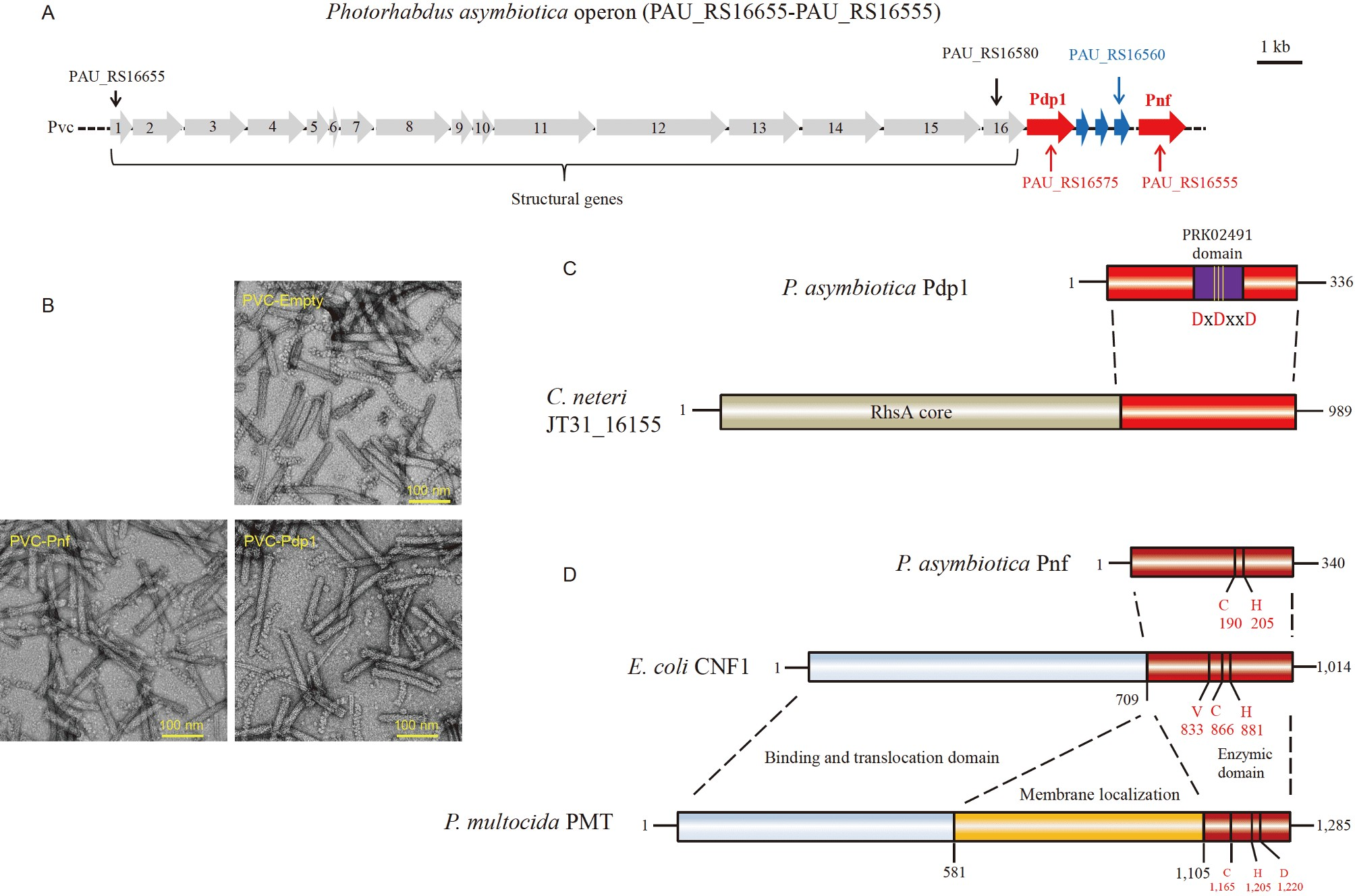Characterization of Photorhabdus Virulence Cassette as a causative agent in the emerging pathogen Photorhabdus asymbiotica
The extracellular contractile injection systems (eCISs) are encoded in the genomes of a large number of bacteria and archaea. We have previously characterized the overall structure of Photorhabdus Virulence Cassette (PVC), a typical member of the eCIS family. PVC resembles the contractile tail of bacteriophages and exerts its action by the contraction of outer sheath and injection of inner tube plus central spike. Nevertheless, the biological function of PVC effectors and the mechanism of effector translocation are still lacking. By combining cryo-electron microscopy and functional experiments, here we show that the PVC effectors Pdp1 (a new family of widespread dNTP pyrophosphatase effector in eCIS) and Pnf (a deamidase effector) are loaded inside the inner tube lumen in a “Peas in the Pod” mode. Moreover, we observe that Pdp1 and Pnf can be directly injected into J774A.1 murine macrophage and kill the target cells by disrupting the dNTP pools and actin cytoskeleton formation, respectively.

https://link.springer.com/article/10.1007/s11427-021-1955-4


